Construction words
Building, erecting, foundation, structure, architrave, cornerstone: these are but a few words that our cultural catalogue has borrowed from construction, transforming them from physical reality of the yards into support for symbolic processing. These terms are strong and substantial, because they can express and transmit ideas, meanings, evocations, qualities and peculiar properties.Symbolism of the tools
Building tools have always inspired a rich production of symbols. Masonic symbolism is a striking example, with a square ruler, a compass, a level, a plumb line, a mallet, a chisel, a trowel and the hierarchy of the initiate follows the professional levels of the building trade: bricklayer, apprentice, workman, master.Building tools have always inspired a rich production of symbols. Masonic symbolism is a striking example, with a square ruler, a compass, a level, a plumb line, a mallet, a chisel, a trowel and the hierarchy of the initiate follows the professional levels of the building trade: bricklayer, apprentice, workman, master.Building tools have always inspired a rich production of symbols. Masonic symbolism is a striking example, with a square ruler, a compass, a level, a plumb line, a mallet, a chisel, a trowel and the hierarchy of the initiate follows the professional levels of the building trade: bricklayer, apprentice, workman, master.Worksites
The worksite, par excellence, is Babel, the famous tower the Bible talks about whose iconography is varied through the centuries, but with one constant element: the Tower always appears as a work in progress, where we can spot building figures in action, busy with their own task, displaying tools, materials, construction stages, almost giving us the opportunity to open a breach in the time continuum and observe a real working site of the past.“In the yards you can find interesting men, beaten, on the go, stranded sailors forever” (Erri De Luca, Tre cavalli)
cuant ch'i passi a pît
devant a un nôf cantîr
curiôs i cjali denti
se a 'nd è fraseas enfra las breas
o balconetas tas spaltadas
e i mi jôt dapît fantat
in fonts das fondas
a segnâ plintos e mûrs
a travuardâ cul livel
a controlâ fiers e betons
e no simpi ridint
a trai devôr ai arabos
blestemas par cjargnel
(Leonardo Zanier, Cantîrs).
«When I walk past
a new construction site
I curiously look inside
to see if there are any
gaps between the planks
or windows in the enclosures
and I see myself as a young man
down with the foundations
outline the plinths and the walls
mark with a tachometer
check the iron and the concrete
not always laughing but
cursing the Arabs in "Cjargnel"*»
* A variant of Friulian language, Northern part of Friuli.
Pragmatic work
ich in symbols and rituals, the trade of building is practical, but it is familiar with religious and laical customs that are associated to the working cycle: the grounding of foundations, the setting of the foundation stone, the building of the roof, the end of works. These rituals underline and celebrate some socially important moments, transitions, beginnings (full of expectations) and endings (when the celebration relieves workers from the heaviness of the task).Foundations
It is a good omen to insert coins, blessed olive branches, holy images in the corners of the foundations in order to favour abundance and protection for the house and those who dwell in it.Laying of the foundation stone
The laying of the foundation stone, and the attached blessing, is the start of a building and of its life. The construction trade has established precise rules.When reaching the top of the roof: to lift a branch or to hoist a flag
The realization of the roof marks the end of structural works in a building, moving towards conclusion. The branch exposed on top of the roof is a sign of this final event.Licôf
Licôf is the final ritual of the works and it calls for conviviality among those who took part in the work.Aun peçut tajât di fresc
al trimula inflochetât
braurôs ben che inclaudât
sul colm dal tet
sot cidin par ‘na dì
il cantîr bandonât
menavuâi muradôrs
capo e paron
parincj paisans e architet
mangjin bevin insiema par ‘na dì
cjantin insiema par ‘na dì
cença sparagn cença cunfins
la vôra a è rivada insomp
tra il spiç dal colm e il cîl
il spiç dal peç
(Leonardo Zanier, Licôf ).
«a little fir freshly cut
trembling and covered with snowflakes
proud even if nailed to the roof
beneath it, silent for a day,
the abandoned building yard.
workers, bricklayers,
master and owner relatives,
fellow countrymen and architect
eat and drink together for a day
sing together for a day.
work has reached its climax
between the roof and the sky
proudly stands the peak of the fir»
Rituals for the beginning and end of works
The beginning and end of a work are crucial moments that deserve a celebration through religious or laical ceremonies.Bibliography
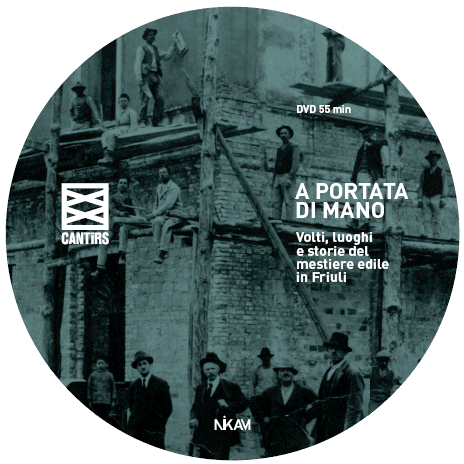
A portata di mano.
Volti, luoghi, storie del mestiere.
Realizzato da Nikam Immagine Video, Udine (2014), a cura di Paolo Comuzzi, Andrea Trangoni, Sabrina Tonutti. Il documentario si articola in una serie di video-interviste a lavoratori, imprenditori edili, insegnanti e Direttori di istituti aventi a che fare con l’edilizia friulana. Le tematiche più salienti affrontate sono: la trasmissione del sapere di mestiere ai giovani; come è cambiato il settore edile nel giro di mezzo secolo; l’emigrazione in edilizia; l’evoluzione tecnologica e normativa; storie personali di mestiere; storia delle fornaci; edilizia idraulica; la lavorazione della pietra; il mosaico; la prefabbricazione; tecniche e materiali in edilizia. Oltre alla video-interviste il documentario propone riprese video realizzate ad hoc e una ricca selezione di materiale filmico/fotografico d’archivio.
LE TUE FOTO

per spedirci del materiale
fotografico






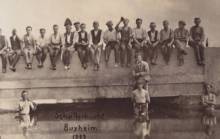
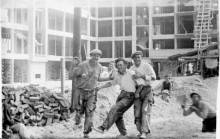
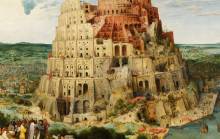
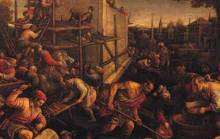


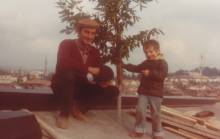
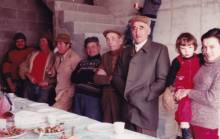
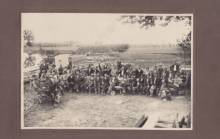
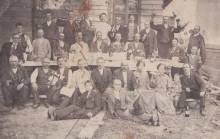
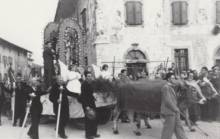

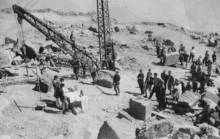

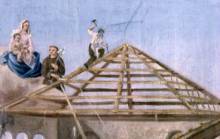
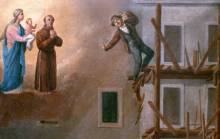
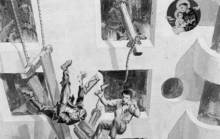
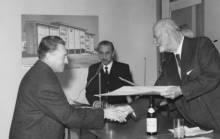
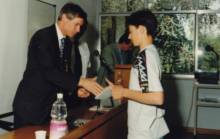
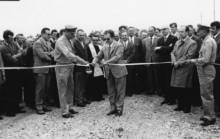



 museo@cassaedileud.it
museo@cassaedileud.it